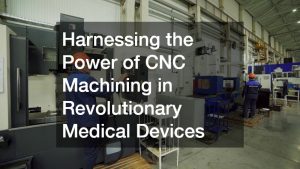Protecting something valuable through metal coating would be an excellent way of extending an object’s lifespan. Some metals are at risk for corrosion, as the oxygen in the air binds with the iron to form the red rusty substance so often observed.
With machinery making up a large part of the world’s daily operations, the chances of metal parts becoming outdated is zero to none. That said, depending on where the manufacturers will use metal parts, there are varying corrosion types that could affect them:
- Cracking under pressure
- Caustic chemical agents
- Electro conductive contact
- Local or general exposure
Coating metal surfaces with other more durable metals that won’t readily react with the atmospheric components has been a viable solution for many years. According to Market Watch, the industry doesn’t indicate slowing down any time soon and could expand to a multimillion-dollar industry by 2028.
For those who need a better understanding of this major industry, below are additional things to discover, including the methods, elements to consider for each, and all their benefits.
What are Metal Coating Methods?
Although it may be a scientific method that not many will fully understand, there are ways of getting the coating substance to adhere to the surface of the metal part in need of coating. Furthermore, metal coating companies must find the correct technique to suit the object’s purpose.
Here are some of the methods:
- Physical vapor deposition (PVD) coating: It’s a gold standard of metal coating that uses the latest technology, including vacuum, to add an extra protective layer to metal parts. Want to learn more? Check out Korvus Technology’s article on PVD coating explained or other helpful resources that offer further information on how this process plays an essential role in a wide range of sectors, such as microelectronics and home hardware.
- Roll or brush coating: This method is popular in the field, as it’s simple to roll or brush a layer of paint over the surface.
- Electroplating: The technique involves ions that alter the surface of the metal component to prevent corrosive agents from damage. Thus, it’s a good choice for geometrically challenging things.
- Hot dipping: It’s perfect for more complex surfaces where other methods could struggle to reach all the surface areas. The object is usually dipped into a bath of the coating solution, so the coating particles adhere to the article.
- Powder or liquid spraying: For this method, a liquid or powder coats the object either by spraying it like paint or by electrostatic charge, causing the powder to bond with the component.
- Conversion: This electroless plating form uses black oxide to coat and protect a metal surface.
Selecting the most suitable method for the specific part could hinge on a few more elements to consider, but all these methods are currently in use for different purposes.
The Elements to Consider
Each type of metal coating will have its benefits for the industries that use it, and the following list contains some things to ponder before picking one:
- Does the part need protection from rust, chemicals, or other factors? The object and industry will dictate what coating will be needed, whereafter the coating method can be established.
- How urgently does the coating need to finish? Some methods may take longer than expected, which could delay production lines.
- What is the budget for metal coating? All the methods vary in price range, and the manufacturer needing the part should decide how much they want to spend on the metal coating as part of their operational costs.
After carefully considering these elements, it should become clear which technique will benefit the metal part and the manufacturer the most.
What are the Benefits of Metal Coating?

Along with the protection of metal parts, there are other benefits that metal coating has for these components. Again, the industry will be a deciding factor for adding more value to the components, as explained here:
- Some parts may need help strengthening them, thus making them more durable. It will be conducive for metal parts in a high-contact environment.
- Industries like electronics and aerospace relying on the conductivity of the metal parts may want to improve the workings of components by adding metal coatings.
- The automotive or marine industry will often use metal-coated parts for improved torque and lubrication of engine parts.
- Metal parts are sometimes visible to the naked eye. For this reason, industrial or consumer goods manufacturers can make them more aesthetically pleasing by adding a glossy, polished finish to the surface.
Metal coating boasts more benefits than meets the eye, leaving many industries to choose these protection methods repeatedly. Plus, computer repair technicians, among other professionals, will agree that in this fast-paced world of technology, metal coating serves a vital purpose.
Conclusion
The metal coating business is booming, with added benefits across industries. You’ll even notice metal coatings around your home, such as your outdoor furniture, so you don’t have to worry about your patio furniture rusting because of a rainstorm.
Metal coating provides an effective and convenient protection method, keeping the durability and integrity of metallic structures and objects. With the right type of coating for the right application, many metal assets will retain their service life.




